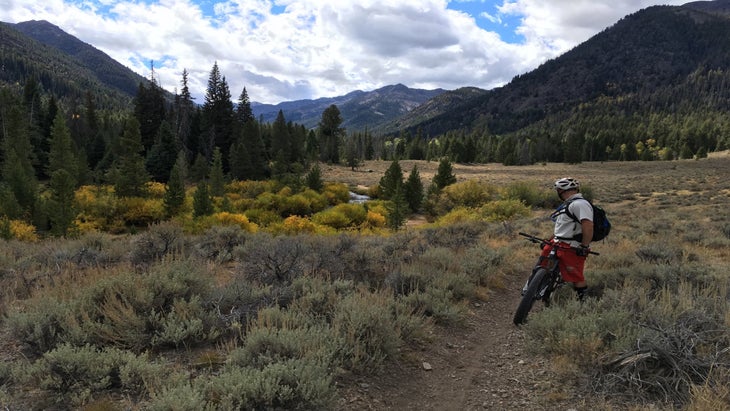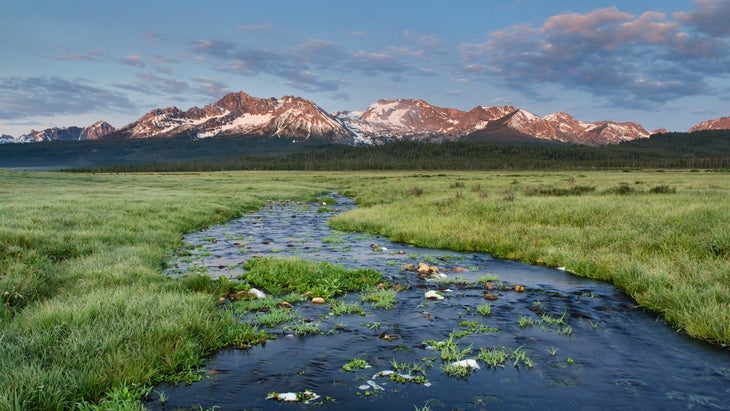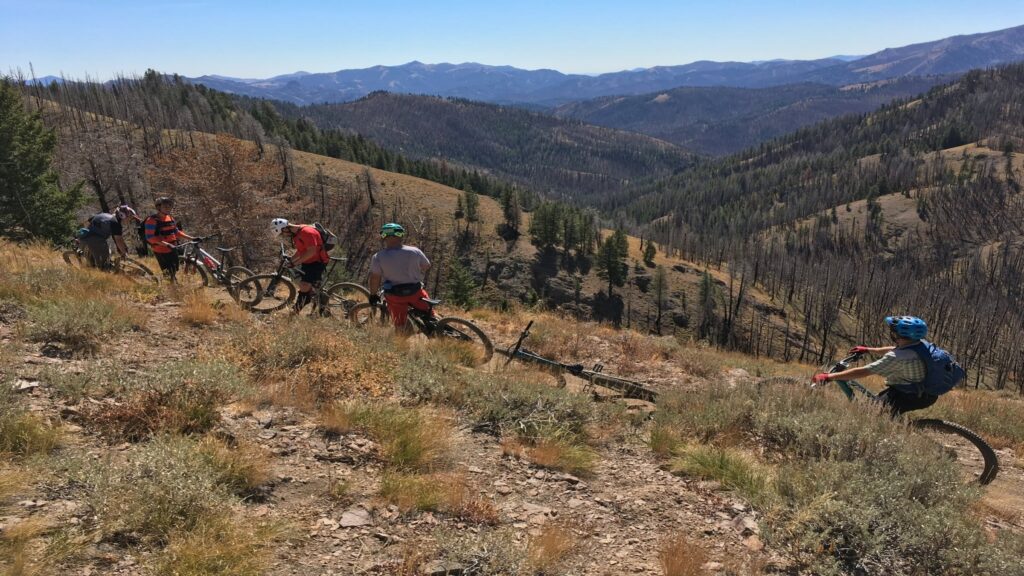Idaho’s rugged Sawtooth Valley is as remote as it gets, and it’s not a place where you’d want to have a problem
In September, the mountain range can get cold, with temperatures sometimes dipping into the low 20s at night. It’s not a place you want to get lost, especially without the proper gear (Photo: Tommy Gwinn)
Published October 6, 2025 12:13PM
In September, mountain biker Tommy Gwinn and two others set off on their annual multiday biking trip in the Idaho wilderness. Unexpectedly, they rescued missing hiker Heather Wayment—disoriented, malnourished, and injured—17 miles from her last known location.
Idaho’s Sawtooth Valley is as remote as it gets. It’s 15 miles from the nearest paved road—and 10 miles, and several thousand vertical feet of climbing in any direction—to get to the nearest dirt road. It’s not a place where you’d want to have a problem.
But that’s what happened during our annual mountain biking trip. After a full day of riding in the backcountry with my brother, Vinny Gwinn, and our friend Shelton Robinson, we encountered a woman on the trail who was attempting to walk but appeared severely disoriented. It was about 2:30 P.M. She was in her underwear, without shoes, and had both her shirt and shorts tied around her feet to protect them. There were visible scratches and cuts all over her legs and body. Her feet were raw and bleeding. Something didn’t look right.
In September, the mountain range can get cold, with temperatures sometimes dipping into the low 20s at night. It’s not a place you want to get lost, especially without the proper gear.

Hot Dogs, Cool Ranch Doritos, and Boys in the Backcountry
For 13 years, our group of friends from the Pacific Northwest and beyond has been descending upon the Sawtooth Valley in mid-September for a multi-day mountain biking trip. In the early years, it began as a way for a group of accountants to unwind after the September 15 tax deadline, but it has since evolved into a sacred “can’t miss” event for many of us.
Like most of our backcountry adventures begin, ours started with eight guys in tents, eating hot dogs and Cool Ranch Doritos, diving into the icy waters of Alturas Lake to take a bath. Today, most of us have graduated to camp trailer and hot showers—but the stoke has never died.
This year, on our second day, we left camp around 11:00 A.M. to begin our ride, where we topped out at around 9,000 feet. Our intention was to return to camp in time to cut wood, hang out, and cook dinner before the sun set—but the trail had other plans.
A Lifetime of Skills For an Hours-Long Rescue
Shortly after lunch, Shelton, leading the pack, encountered the woman who would eventually be identified as Heather Wayment, a hiker reported missing by her family on September 17. As Vinny and I arrived, it was clear that our afternoon just got a lot longer.
With minimal service at camp, we had no idea that Heather was the subject of an intense multi-agency search and rescue effort led by the Blaine County Sheriff’s Office. Astonishingly, we found her more than 17 miles from her last known location, north of Ketchum, Idaho, away from her vehicle.
We began chatting with her, asking her name and what she was doing so far in the backcountry. We offered what food and water we had, as well as extra clothing. It quickly became apparent that she was extremely malnourished, dehydrated, and had already spent two nights in the woods in near-freezing temperatures.
After a lifetime of growing up in the backcountry, mountain biking, snowmobiling, and riding dirtbikes, we’ve seen our fair share of problems. We know how to handle this one as well.
Executing a Backcountry Rescue
We used our GPS app to determine our exact location and calculate the distance to the nearest road, which was up and over the mountain. Based on this information, we decided that we didn’t have the resources to evacuate her before dark. We assessed the situation, her injuries and physical limitations, and determined that Heather wouldn’t be able to evacuate on her own, either.
About 20 minutes after encountering Heather, I texted my wife, Kenzi, via satellite. The area is so remote that even on the mountain peaks, there is no service for more than 20 miles. I informed her that we had a search and rescue situation and to contact the Blaine County Sheriff’s office immediately. We conversed back and forth via satellite text throughout the rescue operation, offering our GPS coordinates, information about Heather’s identity and condition, information on the terrain, and possible heli landing zones. Kenzi maintained phone contact with the Sheriff’s office and Search and Rescue for nearly two hours, relaying all information we could offer to the teams.
We received word from Kenzi that a helicopter was inbound and would be landing in roughly 30 minutes. Around this time, three other dirt bikers stopped to offer additional support, including food and water.
We were informed that the helicopter had landed and were given its GPS coordinate, which was about a half-mile down the trail in an open field. At that point, we were able to lift Heather onto the back of one of the dirt bikes, and the driver transported her slowly to the landing zone.
Blaine County Sheriff Morgan Ballis wrote in a post shared to X that Heather was transported by Life Flight 76 with unknown injuries to St. Alphonsus Medical Center in Boise. Other details about Heather’s rescue, why she was in the wilderness alone, or how she is doing now have not been released to the public, and I’d like to respect her privacy.

How Slowing Down and Coming Prepared Can Save a Life
I haven’t connected with Heather since the rescue, but I would love to grab a cup of coffee with her someday. I’m grateful that she is okay and hope others can use this experience to make good decisions when recreating in the backcountry. She’s not the first and will not be the last person to get lost in remote terrain. Being prepared by letting someone know where you’re headed goes a long way towards ensuring a positive and safe experience.
The lesson? My group may have become lax over the years with carrying first aid, extra clothing, and planning for the worst. Although we have the essentials, situations like this make you think twice about where you are and how much risk you’re willing to take. It’s fun to go fast and ride gnarly terrain in a controlled environment where medical attention is readily available, but it’s a good idea to tone it back a notch when in remote terrain.
With a wife and two little girls at home now, that acceptable risk has gotten lower over the years.
As told to Madison Dapcevich. This interview was edited for length and clarity.


